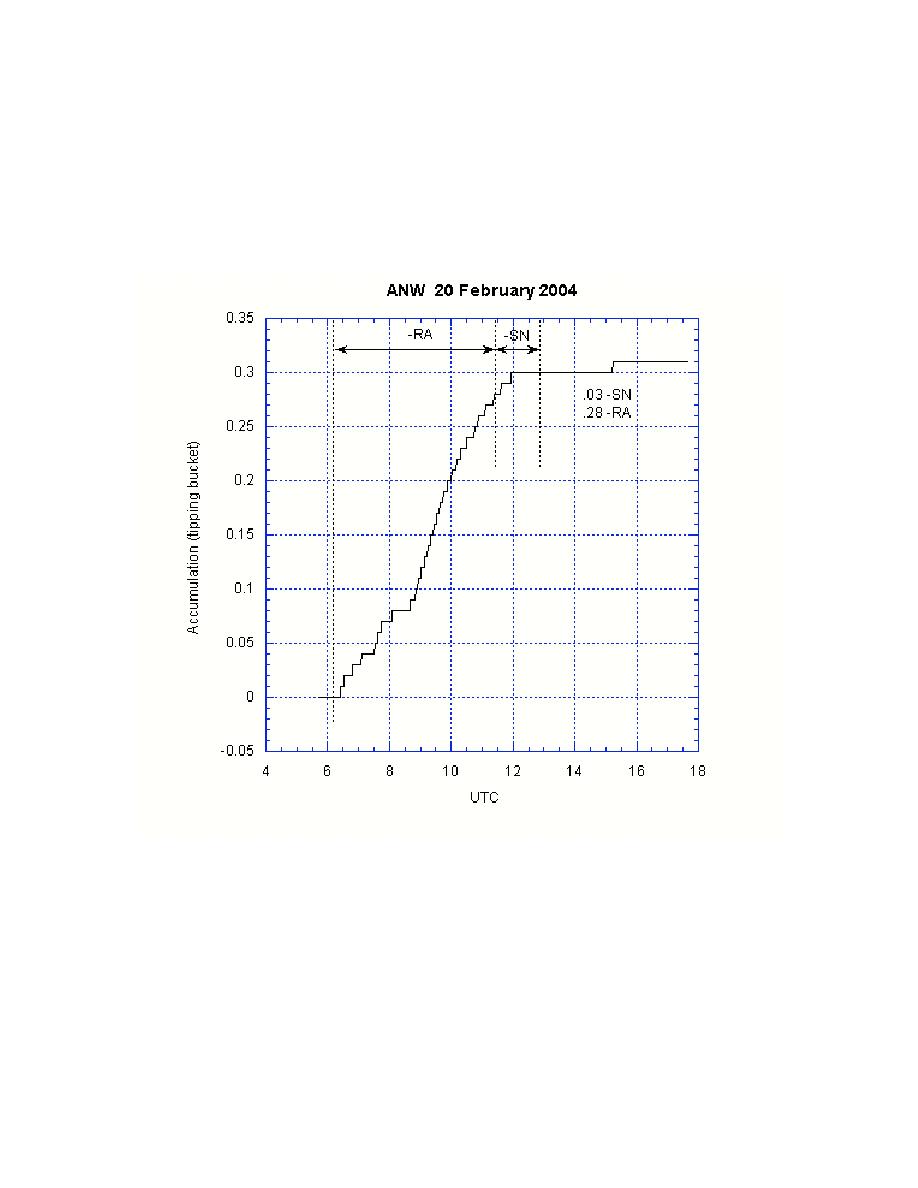
Because temperatures were just above freezing during the event, any snow that fell was
likely to have melted soon after impact. According to one report there was about 0.1 -
0.2 inches of slush on the ground around the end of the event at ~13 UTC. From the
tipping bucket there was about 0.3 inches of liquid accumulation during this event with
about 0.28 inches falling as rain and 0.03 inches falling as snow (Fig. 10.46). Blowing
snow was essentially never forecast or observed along I-35 N during this case, due to the
warm temperatures and presence of rain near the time of the snow.
Fig. 10.46. Liquid precipitation (inches) from the tipping bucket gauge
located at the METAR site.
74



 Previous Page
Previous Page
